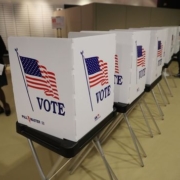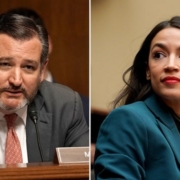How Can We Fix Polarization? Part 2: Implementing Strategy

Despite President Biden’s vow to unify America, legislation in the new Congress appears poised to continue along strictly partisan lines. Is common ground really possible – and what will it take to get there?
In this second installment of our three-part blog series on how to fix polarization, Common Ground Committee sat down with its co-founders Erik Olsen and Bruce Bond to talk about strategies that can lead to more progress and less division.
Your work focuses on inspiring the exhausted majority to seek common ground. Once you’ve gotten their attention, what do you do from there?
Bruce Bond: There are lots of different things. There are a lot of groups out there, including us, that have put out positions on, “Here’s how you have good, productive conversations with people that you disagree with.” We can really look into moving the ball forward when it comes to finding a solution or, at the very least, engaging with people to understand what’s really involved in solving a problem.
You have these conversations with people you disagree with to understand what their position is and why they have them. And when you do that, you learn a lot, you have a certain empathy for the people that you’re speaking with, and it just puts you in a completely different position to have a conversation.
We explored this dynamic in a recent podcast episode with two young men from different sides of the aisle who took a cross-country roadtrip together. Ultimately, their commitment to connecting at a human level transcended their differences.
So knowing how to have the conversation is a key element in solving the polarization problem. It’s been said “It’s hard to hate up close.”
Does this apply to the general population, or the leadership?
Erik Olsen: Both. That is the next thing: what we can do from a leadership level? How can we convince our leaders at the top, particularly at the federal level, who really set the tone for this? If you can solve the problem of Congress in particular being so divided, then you would see a much different view by the public about the value of Congress, and the value of engaging in productive debate — as opposed to debate to win the argument.
So, you’re talking about getting folks to value productive debate instead of the art of winning, or the art of the food fight. Does that also mean electing people who have that mindset already?
Bond: Yes. Along these lines, we developed the Common Ground Scorecard, which is a tool that helps voters identify the person running for office that are most likely to reach across the aisle and find common ground with those that are the other side of the aisle, so to speak.
On paper, these are little things, but they are significant. If you can learn to have a conversation, and you can keep an eye out for people in or seeking office that are likely to work to find a solution rather than win an ideological argument or not engage in the debate for fear of being primaried, for example, which is a problem that we have now.
If you can get those leaders to say, Finding common ground is a better way, now you’re on to something. Leaders tend to fear the voters more than anything else. If the voters start voting with favoritism toward those who are common grounders, as we like to call them, you start to see some change.
Olsen: We’ve been offering new members of Congress the opportunity to take a pledge we call the Common Ground Commitments. And they’re saying, “Yeah, we do want to make these commitments,” because they’re now interested in trying to make Congress more common-ground-oriented.
They need to somehow deal with the leadership on this, and I don’t know exactly how that will happen. But one way that it will happen is if people, representatives, and legislators who are in power have more interest in returning Congress to a more balanced body. They see that polarization as not acting in their best interest.
Congress needs to be returned to a governing body that recognizes that the best interests of the country lie in finding legislators who are willing to work together to try to find common ground. And they’re more likely to stay in office because they’ve worked to solve the problem instead of just creating more problems.
Stay tuned for the next installment of our three-part blog series on how to fix polarization, with a discussion of what it will take to dial back America’s political division. Coming soon!








![Then & Now [Video Thumb Email]](https://commongroundcommittee.org/wp-content/uploads/2020/04/Then-Now-Video-Thumb-Email-180x180.jpg)



